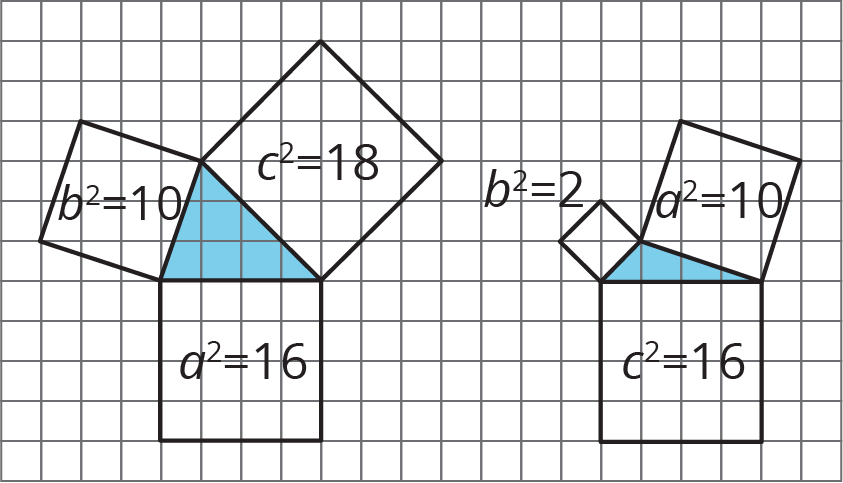Lesson 6
Finding Side Lengths of Triangles
6.1: Which One Doesn’t Belong: Triangles (5 minutes)
Warm-up
In this warm-up, students compare four triangles. To give all students access the activity, each triangle has one obvious reason it does not belong. One key thing for them to notice is whether the triangle is a right triangle or not.
Launch
Arrange students in groups of 2–4. Display the image of the four triangles for all to see. Ask students to indicate when they have noticed one triangle that does not belong and can explain why. Give students 1 minute of quiet think time and then time to share their thinking with their group. After everyone has conferred in groups, ask the group to offer at least one reason each figure doesn’t belong.
Student Facing
Which triangle doesn’t belong?
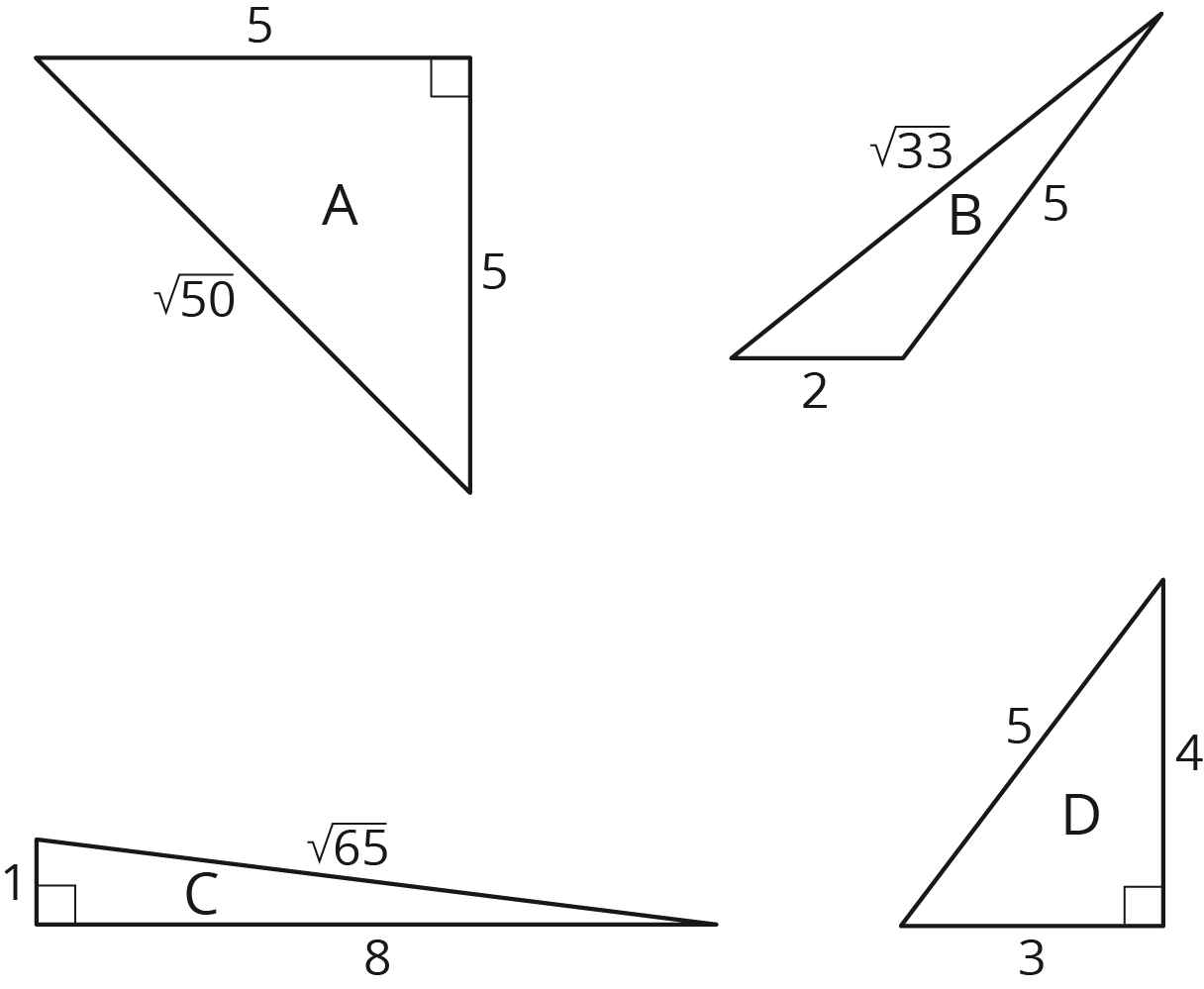
Student Response
For access, consult one of our IM Certified Partners.
Activity Synthesis
Ask each group to share one reason why a particular triangle does not belong. Record and display the responses for all to see. After each response, ask the class if they agree or disagree. Since there is no single correct answer to the question of which one does not belong, attend to students’ explanations and ensure the reasons given make sense.
If no student brings up the fact that Triangle B is the only one that is not a right triangle, be sure to point that out.
6.2: A Table of Triangles (15 minutes)
Activity
In this activity, students calculate the side lengths of the triangles by both drawing in tilted squares and reasoning about segments that must be congruent to segments whose lengths are known. Students then record both the side length and the area of the squares in tables and look for patterns. The purpose of this task is for students to think about the relationships between the squares of the side lengths of triangles as a lead up to the Pythagorean Theorem at the end of this lesson.
Note that students do not have to draw squares to find every side length. Some squares are intentionally positioned so that students won't be able to draw squares and must find other ways to find the side lengths. Some segments are congruent to others whose lengths are already known.
Launch
Arrange students in groups of 2–3. Display the image of the triangle on a grid for all to see and ask students to consider how they would find the value of each of the side lengths of the triangle.
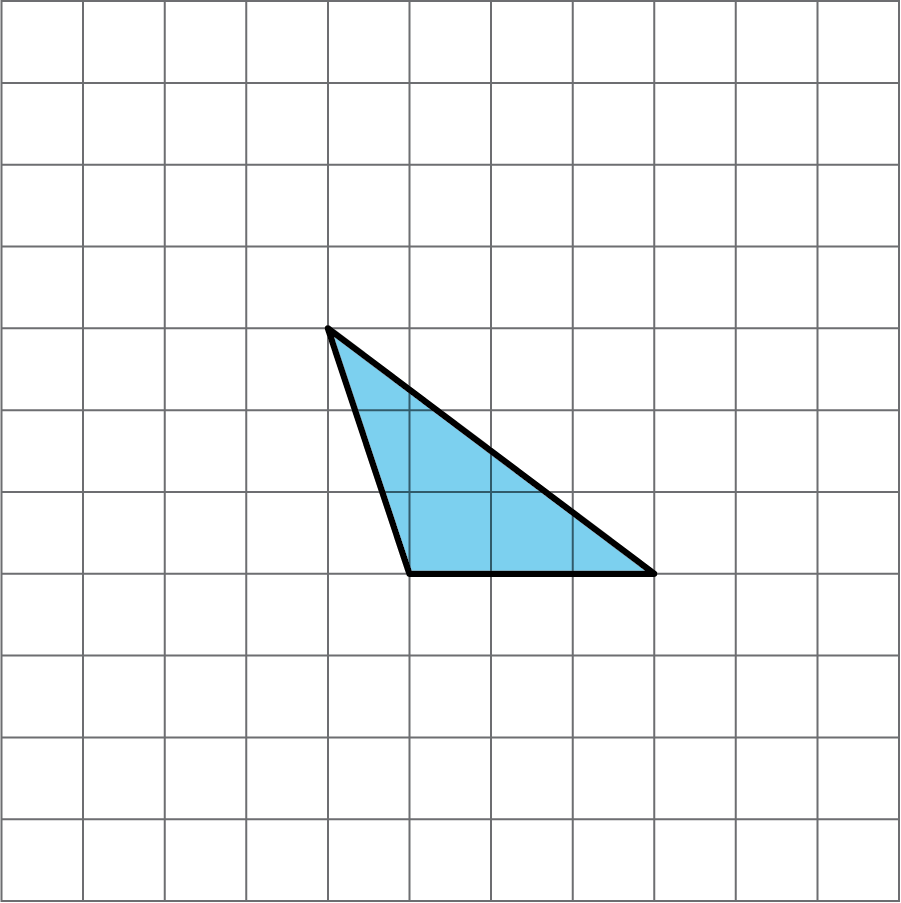
After 1–2 minutes of quiet think time, ask partners to discuss their strategies and then calculate the values. Select 2–3 groups to share their strategies and the values for the side lengths they found (\(\sqrt{9}=3\), \(\sqrt{10}\), \(\sqrt{25}=5\)). Next, show the same image but with three squares drawn in, each using one of the sides of the triangle as a side length.

This directly reflects work students have done previously for finding the length of a diagonal on a grid. Students may point out that for the side that is not diagonal, the square is not needed. This is true, but, if no student points it out, note that \(3 = \sqrt{9}\), and so the strategy of drawing in a square still works.
Tell students they will use their strategies to determine the side lengths of several triangles in the activity. Alert them to the fact that it's possible to figure out some of the side lengths without having to draw a square. Encourage groups to divide up the work completing the tables and discuss strategies to find the rest of the unknown side lengths.
Supports accessibility for: Social-emotional skills; Conceptual processing
Design Principle(s): Support sense-making; Maximize meta-awareness
Student Facing
-
Complete the tables for these three triangles:
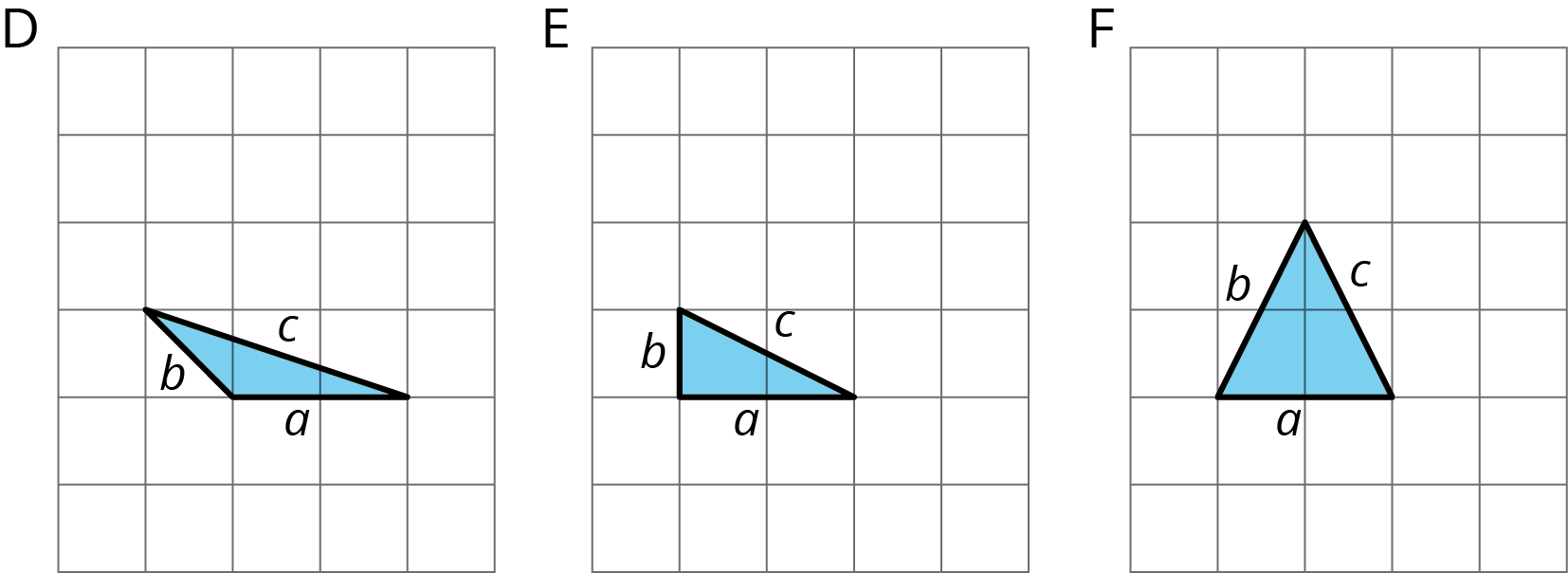
triangle \(a\) \(b\) \(c\) D E F triangle \(a^2\) \(b^2\) \(c^2\) D E F - What do you notice about the values in the table for Triangle E but not for Triangles D and F?
- Complete the tables for these three more triangles:
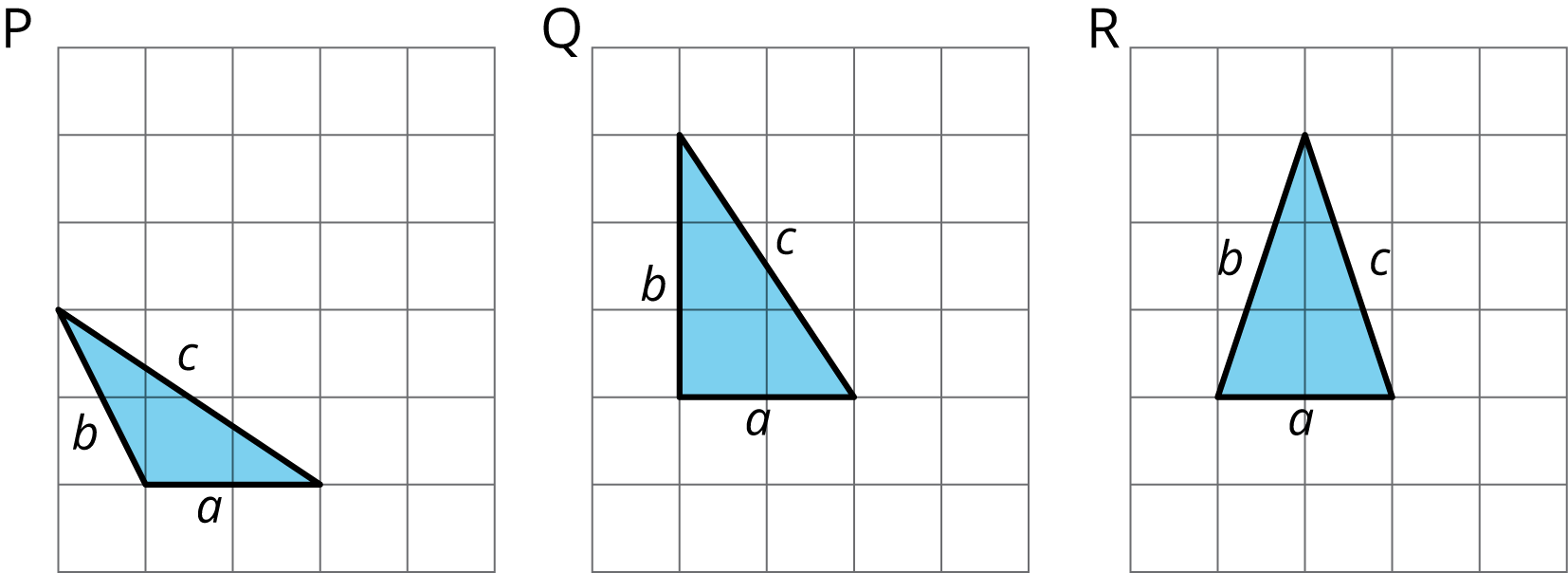
triangle \(a\) \(b\) \(c\) P Q R triangle \(a^2\) \(b^2\) \(c^2\) P Q R - What do you notice about the values in the table for Triangle Q but not for Triangles P and R?
- What do Triangle E and Triangle Q have in common?
Student Response
For access, consult one of our IM Certified Partners.
Anticipated Misconceptions
Some students may use the language hypotenuse and legs for all of the triangles in the activity. If you hear this, remind students that those words only apply to right triangles.
Activity Synthesis
Invite groups to share their responses to the activity and what they noticed about the relationships between specific triangles. Hopefully, someone noticed that \(a^2+b^2 = c^2\) for triangles E and Q and someone else noticed they are right triangles. If so, ask students if any of the other triangles are right triangles (they are not). If students do not see these patterns, don’t give it away. Instead, tell students that we are going to look at more triangles to find a pattern.
6.3: Meet the Pythagorean Theorem (10 minutes)
Activity
In this task, students can use squares or count grid units to find side lengths and check whether the Pythagorean identity \(a^2+b^2 = c^2\) holds or not. If students don’t make the connection that it works for the two right triangles but not the other one, this should be brought to their attention. In the synthesis of this activity or the lesson synthesis, the teacher formally states the Pythagorean Theorem and lets students know they will prove it in the next lesson.
Launch
Arrange students in groups of 2. Give students 4 minutes of quiet work time followed by partner and then whole-class discussions.
Student Facing
- Find the missing side lengths. Be prepared to explain your reasoning.
- For which triangles does \(a^2+b^2=c^2\)?
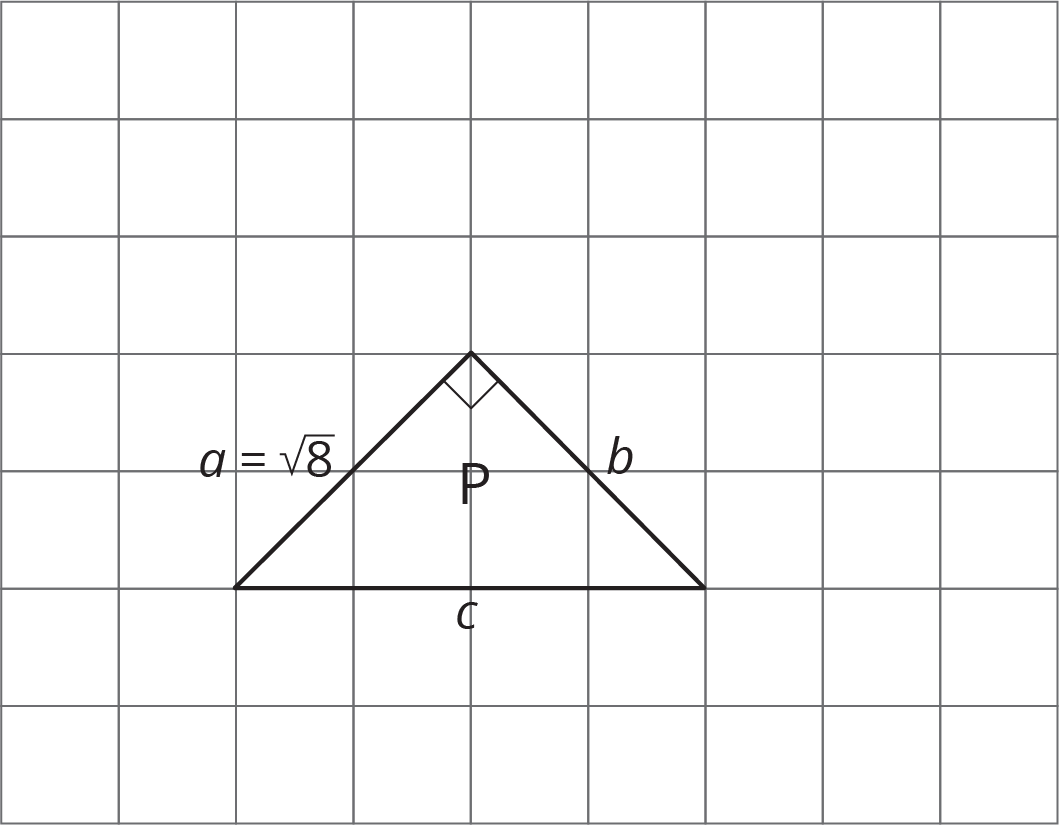
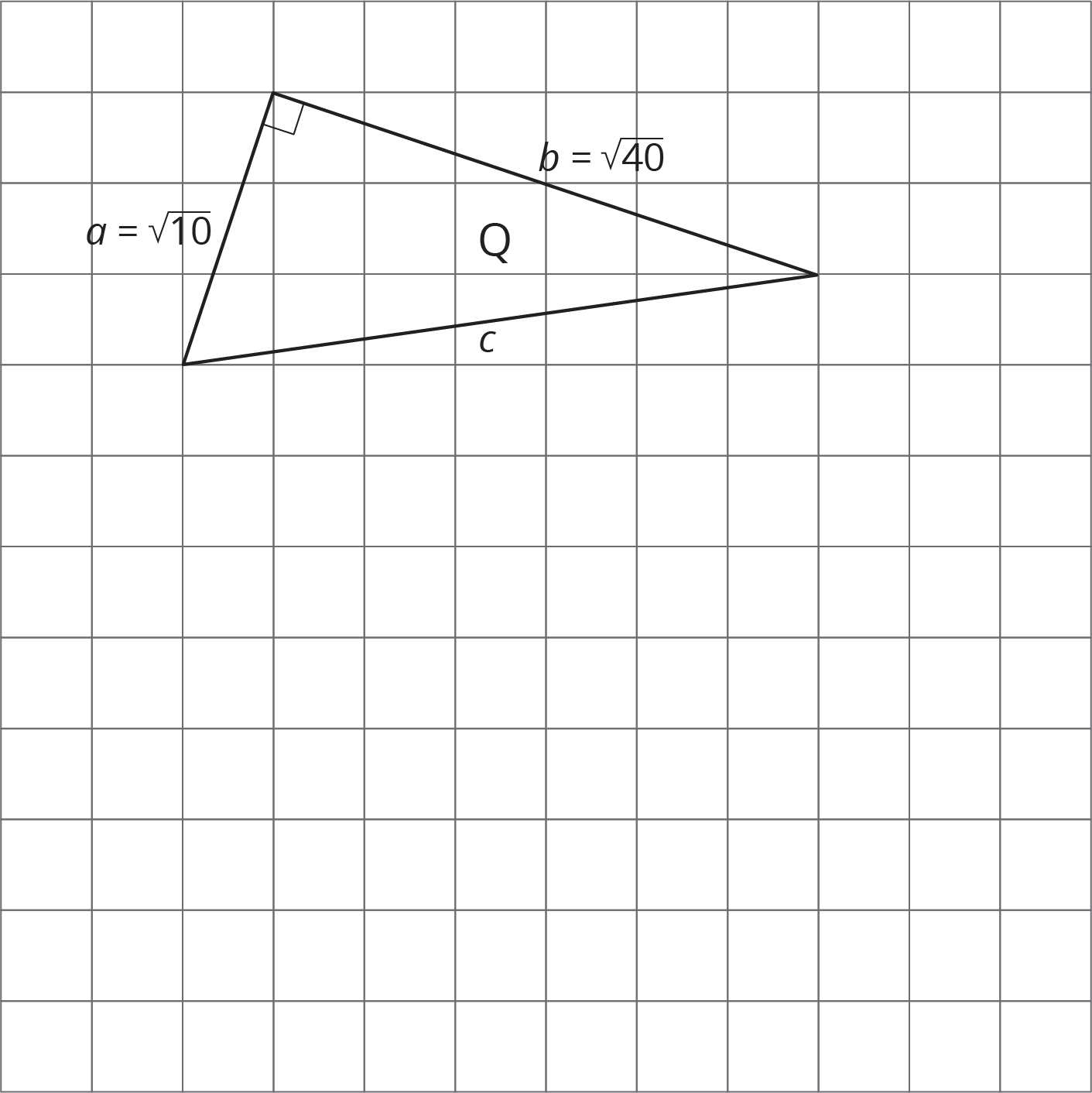

Student Response
For access, consult one of our IM Certified Partners.
Student Facing
Are you ready for more?
If the four shaded triangles in the figure are congruent right triangles, does the inner quadrilateral have to be a square? Explain how you know.

Student Response
For access, consult one of our IM Certified Partners.
Activity Synthesis
Ask selected students to share their reasoning. Make sure the class comes to an agreement. Then tell students that the Pythagorean Theorem says:
If \(a\), \(b\), and \(c\) are the sides of a right triangle, where \(c\) is the hypotenuse, then
\(\displaystyle a^2+b^2=c^2\)
It is important for students to understand that it only works for right triangles. Tell them we will prove that this is always true in the next lesson.
Supports accessibility for: Memory; Language
Design Principles(s): Cultivate conversation; Maximize meta-awareness
Lesson Synthesis
Lesson Synthesis
In this lesson we looked at the relationship between the side lengths of different triangles. We saw a pattern for right triangles that did not hold for non-right triangles. Ask students:
- “What was the relationship we saw for the right triangles we looked at?” (The sum of the squares of the legs was equal to the square of the hypotenuse.)
If time allows, draw a few right triangles with labeled side lengths marked \(a\), \(b\), and \(c\) and display for all to see. Ask students to check that the Pythagorean Theorem is true for these triangles. As students work, check to make sure they understand that when \(a^2+b^2\), \(a\) and \(b\) need to be squared first, and then added. Some students may confuse exponents with multiplying by 2, and assume they can “factor” the expression.
In the next lesson, we will actually prove that what we saw in these examples is always true for right triangles.
6.4: Cool-down - Does a Squared Plus b Squared Equal c Squared? (5 minutes)
Cool-Down
For access, consult one of our IM Certified Partners.
Student Lesson Summary
Student Facing
A right triangle is a triangle with a right angle. In a right triangle, the side opposite the right angle is called the hypotenuse, and the two other sides are called its legs. Here are some right triangles with the hypotenuse and legs labeled:

We often use the letters \(a\) and \(b\) to represent the lengths of the shorter sides of a triangle and \(c\) to represent the length of the longest side of a right triangle. If the triangle is a right triangle, then \(a\) and \(b\) are used to represent the lengths of the legs, and \(c\) is used to represent the length of the hypotenuse (since the hypotenuse is always the longest side of a right triangle). For example, in this right triangle, \(a=\sqrt{20}\), \(b=\sqrt5\), and \(c=5\).

Here are some right triangles:
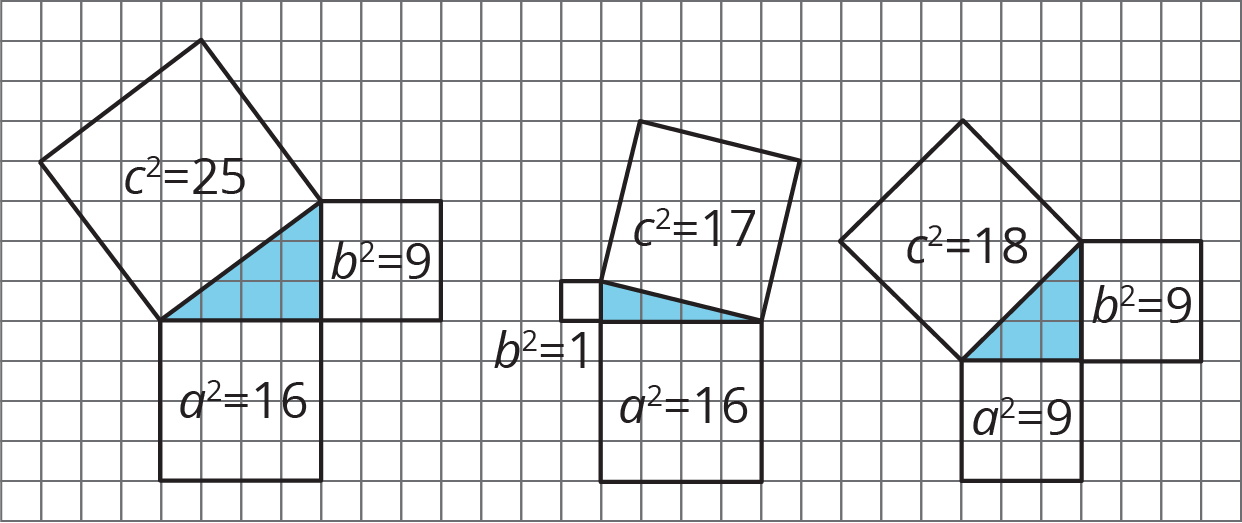
Notice that for these examples of right triangles, the square of the hypotenuse is equal to the sum of the squares of the legs. In the first right triangle in the diagram, \(9+16=25\), in the second, \(1+16=17\), and in the third, \(9+9=18\). Expressed another way, we have \(\displaystyle a^2+b^2=c^2\) This is a property of all right triangles, not just these examples, and is often known as the Pythagorean Theorem. The name comes from a mathematician named Pythagoras who lived in ancient Greece around 2,500 BCE, but this property of right triangles was also discovered independently by mathematicians in other ancient cultures including Babylon, India, and China. In China, a name for the same relationship is the Shang Gao Theorem. In future lessons, you will learn some ways to explain why the Pythagorean Theorem is true for any right triangle.
It is important to note that this relationship does not hold for all triangles. Here are some triangles that are not right triangles, and notice that the lengths of their sides do not have the special relationship \(a^2+b^2=c^2\). That is, \(16+10\) does not equal 18, and \(2+10\) does not equal 16.
